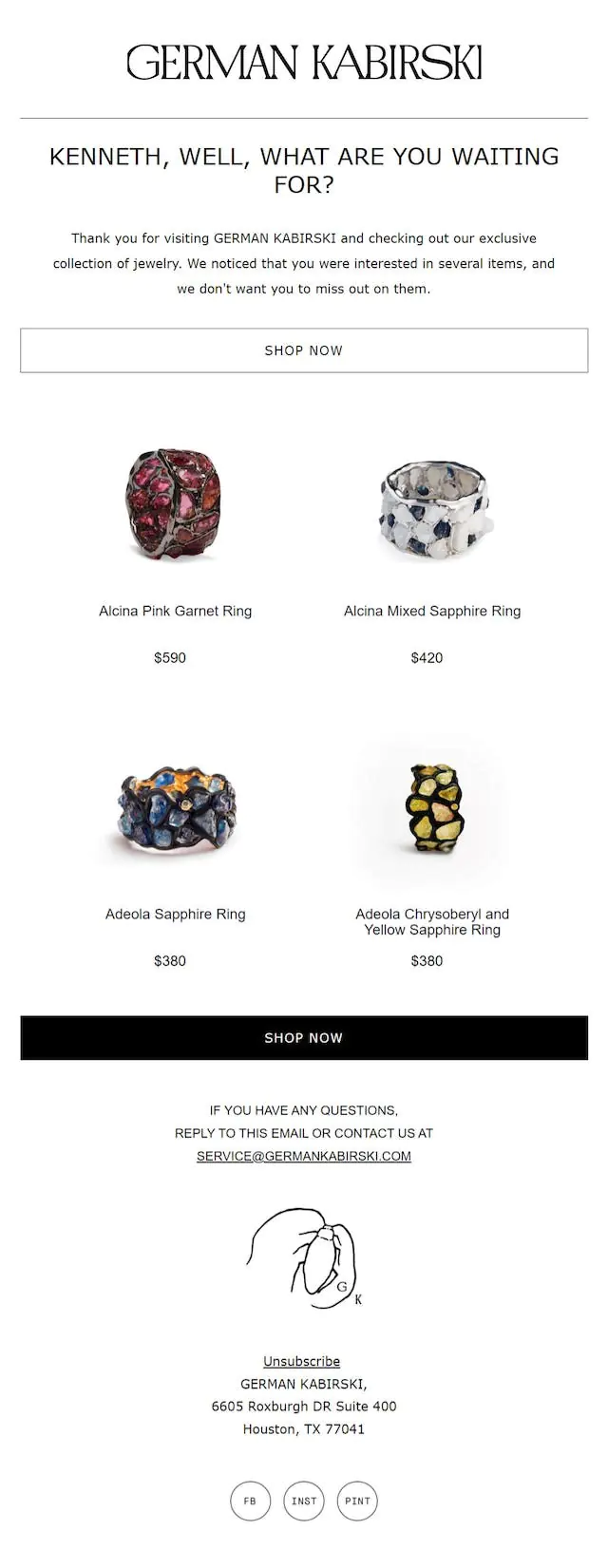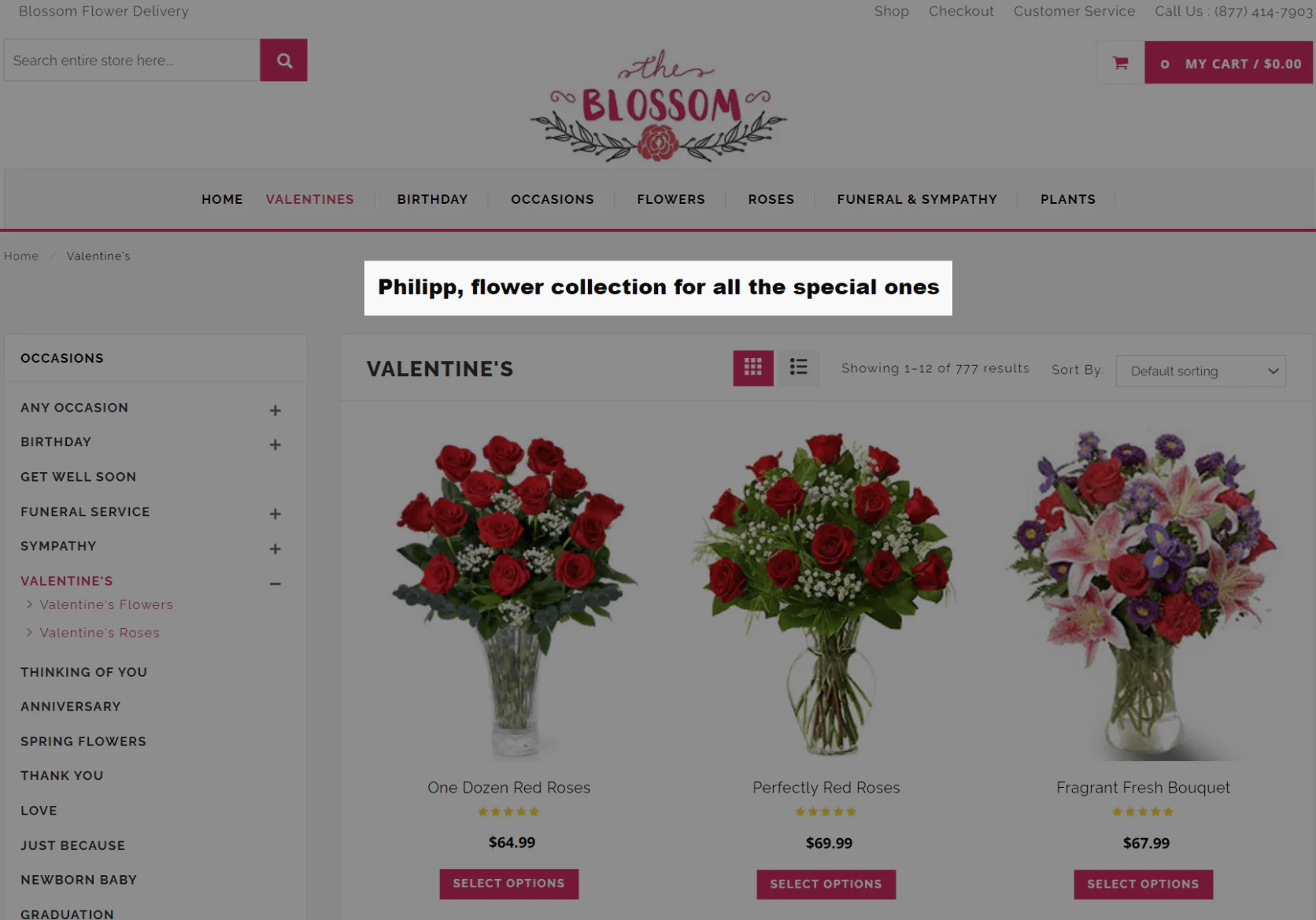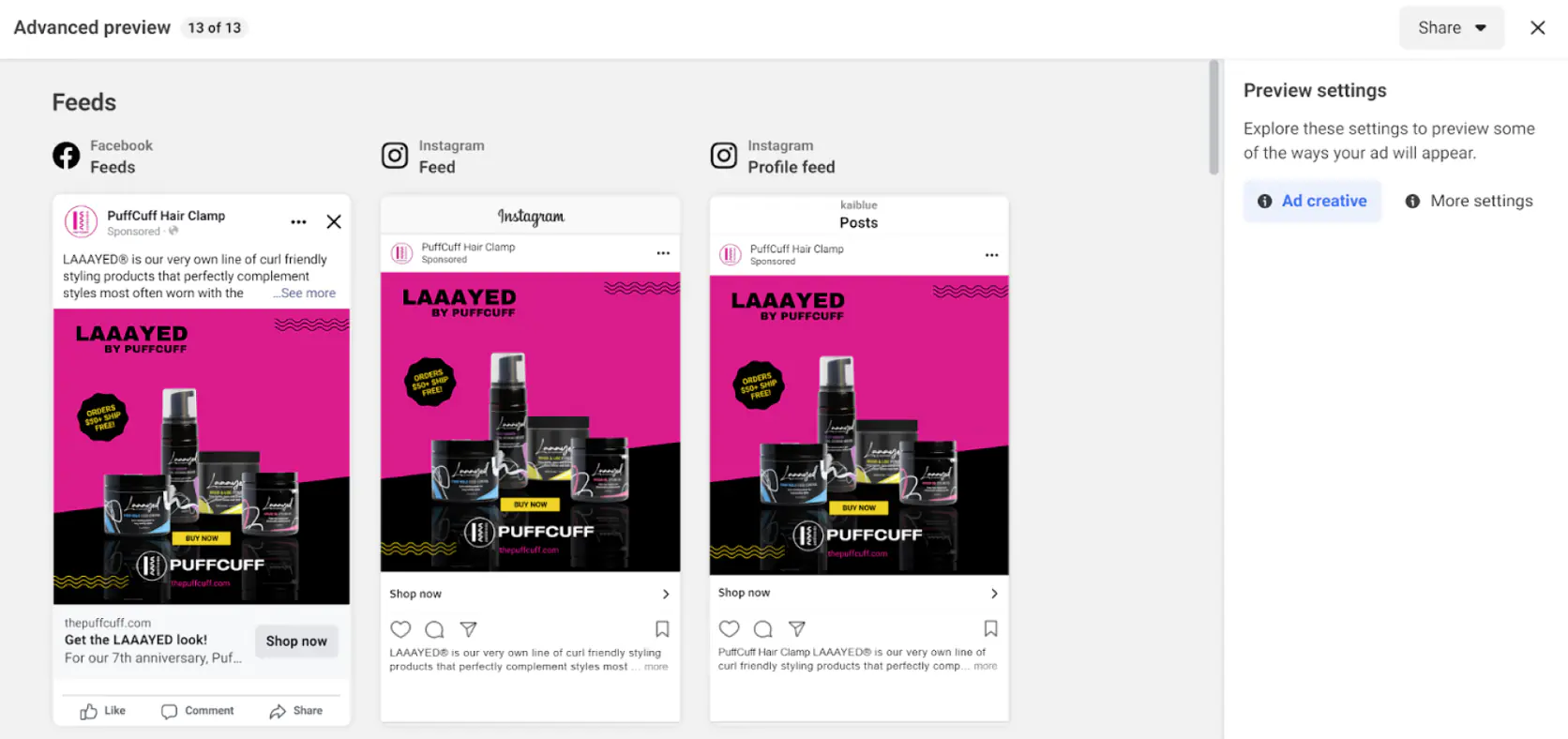Discover how to enhance your marketing strategy with personalized campaigns that connect deeply,
November 6, 2023
Personalized Marketing: Effective Strategies and Real-life Examples
The significance of personalized marketing and its associated technologies is constantly on the rise. For instance, around 90% of surveyed marketers from various companies reported using digital platforms and content to establish a reliable connection with their customers and foster loyalty.
One of the most prevalent examples of personalized marketing is using CRM (Customer Relationship Management) data. While traditional marketing relies on general information about the target audience, this tool leverages data from each individual customer.
Instead of racing for traffic, CRM marketing focuses on cultivating unique relationships with individuals who have expressed interest in the company or brand. This is achieved through the collection and analysis of all available data, such as:
- Customer purchase history;
- Behavior;
- User characteristics;
- Stats on prior interactions.
The process of working with this data and the use of marketing automation tools enable the delivery of highly relevant personalized messages, offers, and advertising to each customer at the right time and through the appropriate channel — for example, when they are ready to make a purchase.
Benefits of personalized marketing
Benefits of personalized marketing go beyond the surface, delivering a host of interconnected advantages for both businesses and customers, creating a win-win scenario:
More Effective Campaigns
Personalization enables businesses to tailor their marketing efforts with precision. By understanding individual customer preferences, behaviors, and purchase history, companies can ensure that each personalized marketing campaign resonates deeply with their audience. The heightened relevance elicited by personalized marketing means more engaging content, which translated into higher engagement rates, click-throughs, and conversion rates. Essentially, it increases the likelihood that a brand’s marketing messages will hit the mark.
Improved Customer Experience and Brand Loyalty
Personalized marketing demonstrates a brand’s commitment to understanding its customers on a personal level. It makes customers feel valued and appreciated, as they receive content and offers that align with their interests and needs. Over time, this fosters a stronger emotional connection between customers and the brand, leading to increased loyalty. Customers are more likely to return for repeat purchases and advocate for your brand externally.
Increased ROI (Return on Investment)
Personalization has a direct impact on the bottom line. When marketing efforts are more relevant and engaging, they generate higher conversion rates. This means businesses can achieve their sales and revenue goals more efficiently, often with reduced marketing spend per acquisition. In addition, personalization offers enhanced cross-selling and upselling, as it allows businesses to recommend complementary products or services based on a customer’s past behavior and preferences. This can lead to increased average order values and more significant revenue streams.
Data-Driven Decision Making
Personalized marketing relies on data analytics and insights. Businesses gain a deeper understanding of their customers' behaviors, preferences, and pain points. This valuable data doesn’t only improve marketing efforts but also informs product development, customer service enhancements, and overall business strategies. It’s a powerful tool for making informed decisions that benefit the entire organization (and, in turn, can help make marketing even more personalized).
Seamlessness and Consistency
Personalized marketing extends across various touchpoints, from email and web content to social media and in-store experiences. A cohesive and consistent personalized experience throughout the customer journey ensures that customers encounter a brand that “knows” them through every interaction. This seamlessness not only enhances the customer experience but also reinforces the brand’s identity and messaging, creating a unified and memorable brand image.
In short, personalized marketing isn’t just about addressing customers by their first name in an email; it’s about creating a meaningful connection, driving results, and delivering an exceptional customer experience that keeps them coming back for more.
Which Industries Use Personalized Marketing?
Today, personalization is being implemented to some extent in almost all B2C markets. This approach is most fully embraced by technologically advanced players in e-commerce.
In more traditional offline industries, retail demonstrates the most efforts when it comes to personalization, with banks and medical companies following close behind. There are also companies that are limited in the advertising communication channels they can use (for legal or other reasons) — tobacco manufacturers, for instance, who until recently heavily relied on targeted marketing as it was almost the only way to support their sales.
Paths To Personalized Marketing
Companies arrive at personalization via different routes and motivations.
Getting Ahead of the Competition
The first and most widespread approach is when traditional marketing ceases to be effective in highly competitive markets, where thousands of companies offer the same product at relatively equal prices and quality. In this situation, companies begin to feel increasing pressure and competition.
Today, drawing traffic to physical stores is very expensive, so it makes more sense to focus on building individual relationships with customers and subscribers. This is a sound approach because competition motivates businesses to create and integrate more sophisticated tools. The key metrics for implementing targeted marketing in such cases are financial, usually tied to the balance between advertising expenses and revenue/profit.
Creating a Better Customer Experience
The second path is when a company strives to achieve its business goals or its founders’ personal/visionary goals by offering customers the best service. In this case, the primary goal of the owner and top management is to create a unique customer experience that can be monetized in the future. The main measure of success in implementing targeted marketing here is customer satisfaction and loyalty.
Natural Progression
The third path is when a company naturally moves towards marketing automation, starting with the basics, such as email marketing. After seeing tangible results, the business understands the potential of this tool and increases its investment. The company then starts using targeted email campaigns, website personalization, targeted discounts, bonuses, gifts, and adopts various channels and approaches in interactions with customers. This happens organically through experiments, hypotheses, trial and error. In this case, the usual metric is ROI on a specific tool or channel.
The Hype Factor
Marketing automation solutions promote personalized services for companies and justify their effectiveness with the capabilities of artificial intelligence and Big Data. In many cases, their implementation is justified, but truly impressive results are always achieved through long and painstaking work.
Amazon’s personalization strategy example is particularly interesting to note. The brand increased sales by 30% within a quarter after implementing a recommendation system — however, few mention that the online retailer didn’t simply achieve this by gathering Big Data. Amazon also spent years meticulously cleaning and classifying data, integrating it with all systems, and conducting tests.
Success stories that only highlight results without highlighting the giant prep work behind the scenes can give the impression that Big Data and AI are some kind of “magic pill.” Unfortunately, that’s not the case.
How to Personalize and Automate Marketing
Marketing automation technology is a sophisticated tool, and its successful deployment can be lengthy, costly, and even futile if you do not address the following key points before getting started:
1. Define the Goal and Its Metric
Identify which aspect of your marketing you want to influence with personalization and the metric you’ll use to evaluate results.
A good metric is one that is tied to money, transparent, and difficult to simulate. For example, revenue gained from targeted campaigns while maintaining or increasing conversion rates and average order values.
At this stage, it’s crucial to designate the individual or department responsible for achieving this metric.
2. Describe Use Cases
The team member responsible for achieving the metric should break down their goal into small, bite-sized tasks. This involves detailing which campaigns to launch, what channels and content will be used, which segments will be targeted, and the expected outcomes for each. It’s important to decide who will be “hands-on” in working with these campaigns — your team, an agency, or freelancers.
Detailed scenarios help answer the question of which technology will suit your needs best. For instance, if you decide to start with a few SMS campaigns for your loyalty program customer base, you may find that you don’t need any technology at all.
3. Determine the Need for Customer Data Integration
In some cases, customer data resides in various databases and IT systems — personal customer data, sales data, pricing, product information, order statuses, and loyalty rewards may be spread across point-of-sale systems, website databases, and CRM platforms.
Situations like these make it essential to synchronize all data, marketing platforms, and gateways to prevent communication chaos. For instance, a campaign that offers a discount on an item the customer has recently purchased or an invalid promo code both point to “integration chaos.”
Customer Data Platforms (CDPs) have become instrumental in helping to synchronize all the above data. Less than 10 years ago, these platforms were either completely unavailable or reserved for large-scale businesses. With the emergence of cloud-based solutions, CDPs have become available for medium-sized businesses as well.
4. Evaluate Implementation Speed and Flexibility
One of the key distinguishing factors of targeted marketing is its speed of adaptation. In a sense, a system of personalized marketing campaigns interacting with customers is like a living organism. You need to respond quickly (within days) to changes in engagement rates, make adjustments, add new segments, and conduct tests.
If making these changes requires frequent IT assistance, such as data exports, segment calculations, and report generation, the speed and cost of marketing experiments are likely to become exceedingly burdensome. The entire process may slow down at best and come to a halt at worst.
Therefore, the chosen technology (or set of technologies) should:
a) Be implemented very quickly (within a few months, while the campaign plan and strategy are still relevant) and keep costs low.
b) Ensure marketing independence from IT within the scope of scenarios the team defined in the second stage.
a) Be implemented very quickly (within a few months, while the campaign plan and strategy are still relevant) and keep costs low.
b) Ensure marketing independence from IT within the scope of scenarios the team defined in the second stage.
5. Assess ROI (Return on Investment)
After completing the previous steps, it’s time to evaluate the financial aspect:
- Sum up expectations on implementation metrics (revenue, savings, speed).
- Assess the costs of the platform and the integration resources required.
- Estimate expenses for those who will be using it.
Examples of Personalized Marketing
Personalized marketing comes in many different forms — to get a better understanding of what it can look like, here are some customized marketing examples from our clients:
Personalized Email Campaigns
A common personalized marketing example that many people encounter daily is found in email campaigns. Jewelry brand, German Kabirski, utilizes customers’ names and product browsing histories to craft personalized emails:

Next Best Offer Predictions
Hair care and accessory brand, PuffCuff, uses personalized marketing to manage communications with clients. One example that’s particularly worth noting in their personalization strategy is product recommendations. Based on big data and machine learning algorithms, the system predicts when a customer is most likely to make a purchase. This is known as the “Next Best Offer” algorithm and it automatically sends email campaigns containing personalized recommendations for each customer when they’re most likely to purchase:

Personalized Browsing Experience
Flower delivery service, Blossom Flower, creates a more customized website browsing experience by addressing customers by their names. If the name can be determined using cookie records, it’s used to personalize texts in the product catalog. This adds a nice personal touch that creates more of a connection between the brand and the customer:

Targeted Facebook Ads
A great personalized advertising example is evident in PuffCuff’s strategy. By gathering data from customers who’ve recently visited their website, placed orders, and engaged with email campaigns, the team formulated a unique segment which they then integrated into Facebook Ad Manager. As a result, the ad reached customers who are not only likely to show interest in the product but also interact with the ad and finalize a purchase:

Personalized Marketing Technologies Available in the Market and How to Choose One
As mentioned earlier, there’s no “magic pill” when it comes to marketing personalization and automation. Targeted marketing and marketing automation platforms can be highly beneficial, but like any complex tool, they require careful implementation and a dedicated team to achieve results.
Several factors influence the choice of technologies:
Do you have a team that focuses on targeted marketing (or a team willing to learn)?
If your company already has a marketing team that works with targeted marketing or individuals eager to learn, consider a full-fledged marketing automation platform that includes data integration capabilities (i.e., a Customer Data Platform — CDP).
If not, you may find value in specialized agencies. These are companies that address specific aspects of customized marketing (for example, trigger-based email campaigns) and offer them as complete solutions. They handle the entire cycle of tasks related to launching typical automated scenarios or personalization. This can be a good way to start your journey into the world of targeted marketing and begin to build expertise within your company.
What type of company do you run?
For traditional offline retail companies, the ability to utilize data from offline sources and offer targeted discounts and promotions in physical stores can be critical. An optimal solution might involve a marketing automation platform with a CDP, personalized promotion capabilities, and a loyalty program.
Small businesses or those with strong in-house IT expertise or non-standard business models may benefit from gateways or basic email marketing platforms. In this case, marketing is handled internally, and emails are sent through connected gateways.
For online companies with infrequent, high-value purchases (e.g., cars), platforms tailored to increasing website conversion rates that come with the ability to engage with new, unauthenticated visitors, might be more suitable.
According to our experience at Maestra, even simple targeted email campaigns can generate anywhere from 5% to 80% extra revenue, with 10% being the average. When you add the effects of machine learning algorithms, website personalization, and personalized promotions, the potential of targeted marketing becomes significantly higher.
Brands that adopt targeted marketing incrementally based on data, metrics, and testing can achieve a 20-30% increase in performance over a longer period (a year or more), according to our clients' analytics.
In Summary
Personalized marketing can benefit any B2C company. A good initial goal is to achieve a 10% increase in added revenue within the first 6 months. When selecting personalization tools, it is crucial to base the decision on specific goals, use cases, time-to-market, and return on investment, rather than merely following prevailing trends.
Personalized and targeted marketing offers the opportunity to reduce expenses on paid traffic acquisition channels while increasing revenue and profitability. The ROI for personalized, targeted marketing campaigns tends to be significantly higher than generic, one-size-fits-all approaches.
Today, personalized marketing and automation technologies are widely accessible, meaning there is a plethora of options to choose from. For those new to targeted marketing, starting with basic email campaigns and segments is advisable, utilizing any standard email service provider (ESP). As proficiency grows, transitioning to specialized technologies and platforms becomes the next logical step, where a team can aid in implementing basic automated scenarios like trigger-based email campaigns. Eventually, for more advanced and effective targeted marketing needs, upgrading to a marketing automation platform with Customer Data Platform (CDP) functionality should be considered.
